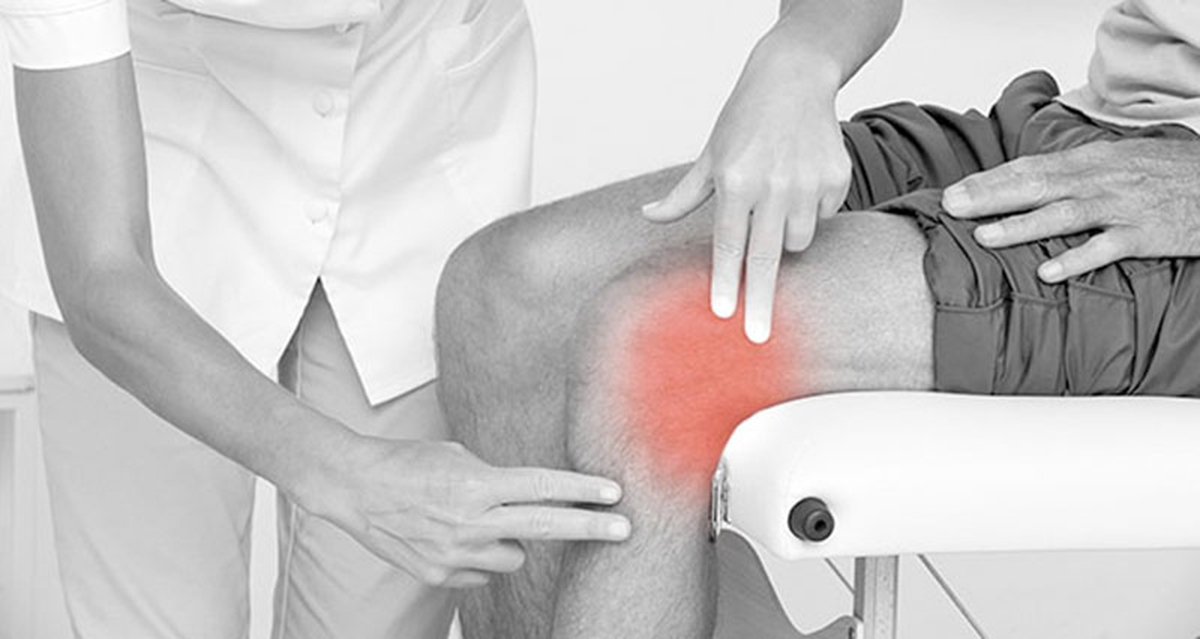Lateral knee pain refers to discomfort on the outside of the knee. We’ve compiled a list of the most prevalent injuries and reasons for this specific type of knee pain.
Medically reviewed by Dr Chaminda Goonetilleke, 1st Dec. 2021
Gradual onset lateral knee pain
Chronic knee pain typically emerges slowly over time, often due to continuous use or as a lingering effect of an improperly healed acute injury.
Iliotibial band syndrome
Iliotibial band syndrome, also referred to as runner’s knee or ITBFS, frequently results in pain on the outside of the knee. This condition is common among runners, cyclists, and soldiers.
You can recognize it by these symptoms:
- Experiencing pain and inflammation on the outside of your knee.
- Symptoms often develop gradually and tend to surface during running activities.
- Temporary pain relief during rest periods, but the pain returns when training restarts.
Read more on Iliotibial band syndrome
Lateral cartilage meniscus injury
Lateral meniscus tear refers to damage to the semi-circular cartilage discs inside the knee joint. This condition can manifest abruptly as an acute injury or gradually due to wear and tear.
Symptoms to watch out for include:
- Outer knee pain along the joint line.
- Increased discomfort when performing deep squats.
- Swelling of the knee, which may also lock or give way.
Lateral ligament sprain
A lateral ligament sprain refers to a tear in the ligament located on the knee’s outer side.
Indications of this injury include:
- Pain experienced on the outer knee.
- Swelling observed over the outer joint area.
- Symptoms range from minor discomfort to knee instability, contingent upon the sprain’s severity.
Patellofemoral pain
Patellofemoral Pain Syndrome (PFPS), a condition known for causing pain around the kneecap (patella), results from a misalignment that causes the patella to rub against the underlying femur bone.
Symptoms to look out for:
- Persistent aching in the knee.
- Tenderness and swelling predominantly around the kneecap area.
- Occasionally, pain may occur on the outer side of your knee.
- The discomfort often intensifies when walking uphill or downhill, or when seated for extended periods.
Read more about Patellofemoral Pain Syndrome
Osteoarthritis
Osteoarthritis results from the degeneration of cartilage that lines and protects the ends of bones in your knee joint. Over time, this can lead to the wearing away of the bone.
The common symptoms are:
- A deep aching pain, predominantly inside the knee but can also affect the outside.
- Pain exacerbation post-exercise.
- Common occurrences of joint swelling or stiffness.
Biceps Femoris Tendinopathy/Tendinitis
Inflammation or degeneration of the hamstring tendon at its insertion point at the back of the knee characterizes Biceps Femoris Tendinitis.
Symptoms to note are:
- Swelling and tenderness at the back of the knee where the tendon attaches.
- Stiffness at the back of the knee, particularly noticeable in the morning or after sitting for prolonged periods.
Synovitis
Synovitis refers to the inflammation of the synovial membrane in the knee joint, which houses the synovial fluid for knee lubrication.
Symptoms to look out for include:
- Swelling and stiffness in the knee joint.
- Possible history of a knee injury, arthritis, or gout.
Referred Knee Pain
Pain on the outside of the knee can stem from issues in other parts of the body, particularly the lower back and hip, causing sciatic pain.
Sudden Onset/Acute Lateral Knee Pain
These injuries commonly cause acute lateral knee pain, and you’ll likely pinpoint a specific moment when the injury took place.
Lateral Cartilage Meniscus Injury
This injury to the cartilage meniscus, semi-circular discs found in the joint, can either occur suddenly or develop over time due to wear and tear.
Symptoms include:
- Pain along the joint line on the outside of your knee.
- Exacerbated pain during deep squats.
- Swelling of the knee, which may also lock or give way at times.
Read more about Lateral Cartilage Meniscus Tear.
Lateral Ligament Sprain
This injury involves a tear to the ligament on the outside of the knee.
Symptoms may include:
- Pain on the outside of the knee.
- Swelling over the outside of the joint.
- Variations in symptoms from mild pain to knee instability depending on the severity of the sprain.
Superior (Proximal) Tibiofibular Joint Sprain
This sprain involves the joint where the tops of the shin bones (tibia and fibula) meet. Dislocation usually occurs from an impact or fall onto the knee, especially when fully bent.
Symptoms include:
- Pain and swelling on the outer surface of your shin.
- The top of the fibula bone may appear more prominent than normal on the outside of your knee.
Critical Causes of Lateral Knee Pain
While not common, some causes of lateral knee pain may have serious complications if missed or left untreated:
Peroneal Nerve Injury
This injury results from a direct impact to the outside of the knee, damaging the peroneal nerve. Distinguishing symptoms may include numbness or tingling in the front or side of the lower leg, weakness in lifting the foot up, and, in severe cases, ‘foot drop.’
Slipped Capital Femoral Epiphysis
Affecting boys aged 11 to 16 years old, this hip injury occurs when the femur’s head gradually slips away from the rest of the bone, causing hip pain that may radiate to the outside of the knee.
Perthes’ Disease
Most common in children between four and eight, Perthes’ disease is a hip condition that can cause tiredness, groin pain, and a noticeable limp. Seek medical advice immediately if Perthes’ disease is suspected, as early intervention can prevent future complications.

